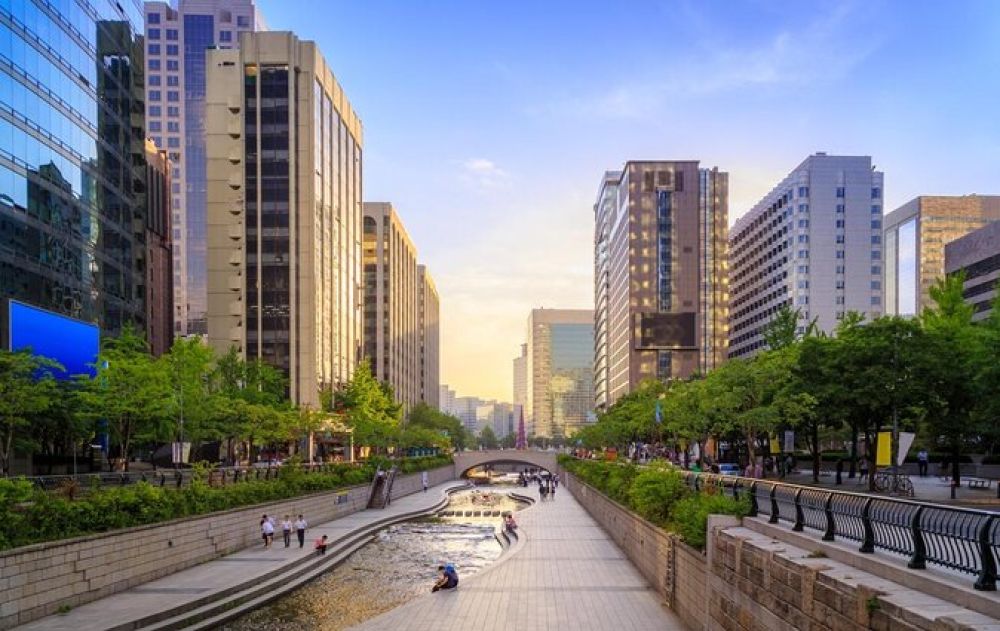

The history of Cheonggyecheon Stream is one of transformation and rebirth. Once a natural waterway that flowed through the heart of Seoul, Cheonggyecheon was an integral part of daily life in the Joseon Dynasty, providing water for household needs, irrigation, and more. However, during the post-Korean War development rush, the stream suffered from neglect and pollution.
In the 1950s and 1960s, rapid industrialization led to an increased population in Seoul, and Cheonggyecheon became a covered-over roadway with an elevated highway above it, erasing its presence from public consciousness. For decades, this concrete structure was a symbol of Korea's economic development but also represented the loss of natural spaces within the city.
The renaissance of Cheonggyecheon Stream began in 2003, when the government launched a massive urban renewal project aimed at restoring the stream to its former state. The effort was part of a larger movement to introduce more green spaces into Seoul and improve the quality of life for its residents. After two years of extensive reconstruction, which involved removing the overpass and restoring the waterway, Cheonggyecheon reopened to the public in 2005 as a modern, environmentally friendly urban oasis.
This project was met with both anticipation and skepticism, but upon completion, it proved to be a great success. The Cheonggyecheon restoration has become a model for urban renewal worldwide and has contributed to the revitalization of the surrounding neighborhoods.
Cheonggyecheon Stream immediately became a popular destination for locals and tourists alike. It helped to refocus attention on the historic and cultural significance of central Seoul. The stream features meticulously landscaped banks, pedestrian-friendly pathways, charming bridges, and waterfalls, creating a serene atmosphere amidst the bustle of city life.
Tourism has steadily increased since the restoration, with the stream attracting millions of visitors annually, eager to experience its modern design merged with historic elements. It plays host to numerous festivals and cultural events throughout the year, further bolstering its draw for tourists.
The tourism trend at Cheonggyecheon Stream now reflects a greater demand for sustainable and eco-friendly travel experiences. Visitors are drawn to its green credentials, the use of natural cooling to improve urban temperatures, and its wildlife habitat. Along with the environmental aspect, experiential travel is on the rise, as tourists seek out the light festivals, art installations, and live performances that Cheonggyecheon offers.
Multi-use urban spaces like Cheonggyecheon are setting worldwide trends. They demonstrate how urban planning can incorporate historic preservation, sustainability, and public recreation. Today, Cheonggyecheon Stream stands as a testament to Seoul's commitment to harmonizing city development with environmental conservation and cultural heritage, setting a standard for future urban restoration projects globally.
To experience Cheonggyecheon Stream, visitors can easily access it from multiple points in downtown Seoul. The area is well connected by public transportation, with numerous subway stations nearby. For the best experience, visitors are encouraged to walk along its banks, especially during the evening when the stream is beautifully lit up, offering a magical urban escape.